In the northern latitudes, coniferous evergreen plants are occupied by a special place, which is very honorable and an important role - decorate landscape design in the offseason, when around gloomy and gray. It is coniferous plants that make up the central part of any garden composition, since in a temperate climate it is quite difficult to contemplate the riot of paints over its window.
Content |
Among the wide variety of species and varieties of coniferous crops, juniper is especially distinguished - a unique plant, which not only decorates the site, but also creates clean and useful air around him, capable of calming and treat. Since the juniper is considered a resident of the northern hemisphere, this wonderful plant can be raised without any problems in Siberia, where care for him is practically no different from growing in other regions.
In this article, consider the features and description of juniper in Siberia, we present the characteristics of the cultural varieties suitable for this locality and climate. And also mention the important aspects and rules for landing and care for juniper in Siberia.
Features and morphological description of juniper in Siberia
Juniper is known to mankind no longer one tet of millions of years, throughout which this amazing coniferous plant found its fans and connoisseurs worldwide. In the southern and tropical regions, the gardeners have a wide selection of plants that can decorate the household plot throughout the year. In the northern hemisphere, the choice is limited, however, gardeners make just unique and incredible landscape compositions with coniferous crops that do not lose their beauty even in winter. Juniper is a particularly valuable instance in a piggy bank of any gardener, since this plant can have a all-round whole shade, it is inherent in the care of the care and amazing medical and healing properties.
Juniper or Juniperus is a coniferous evergreen tree or a shrub that belongs to a large family of cypress and is the closest relative to all famous pines and freshers. Representatives of this kind can be found primarily in the northern hemisphere, from subtropical territories to the Arctic, so one should not be surprised that the juniper grows in Siberia and in the middle lane of Russia. The exception is only one kind of coniferous plant, which is found in Africa. In nature, this amazing plant can be found on a hilly terrain, on stony and mountain slopes, in a deciduous, pine and mixed forest, in the forest-steppes. For example, in mountainous areas most often found low and sharpening representatives of this culture, in the forests you can already see shrub and tree forms of juniper.
The scientific Latin name of Juniperus juniper for one versions occurred from the word "Joini-Parus", which denotes the "giving branches suitable for weaving." However, there is another version of the origin of the title, which is associated with the prickly outlines of the needles of juniper. This scientific name of the plant received thanks to the scientist Karl Linneu, who retained this definition, referred to the evergreen plant in the days of the ancient Roman poet Vergil. Juniper in Siberia is still quite often called Versa, especially one of the varieties of coniferous culture - an ordinary juniper.
Juniper is considered a unique plant that exudes phytoncides, cleaning air, so beside such a plant is useful for health. Its coniferous aroma calms the nervous system and removes the headache, and both useful properties have both the needles of juniper and its cones. However, the greatest value was the decorative qualities of this coniferous culture, which designers used everywhere to create their compositions.
Juniper Description in Siberia:
- Juniper is a perennial evergreen, a coniferous plant that can perfectly grow everywhere and withstand a decrease in temperature to minus 60 degrees, which makes this culture simply indispensable for landings in Siberia.
- The plant can grow in the form of a soil sprinkling busta, as a large shrub or tree. The shape of the crown directly depends on the specific type and variety of juniper.
- The height of the juniper can be from 50 cm to 10-20 m. However, in the territory of Siberia in the gardens, you can most often get bushes or small trees with a height of 1-3 meters, less often 4-8 meters.
- The crown of this coniferous plant can be the most different, which only expands the scope for the creation of garden compositions. This is a spherical, and pyromeidal, and cone-shaped, and wrapped, and the grimaceous.
- In the tree forms of juniper, the barrel is long and straight, shrub plants are characterized by a reprehensive stem with a large amount of branches.
- Young coniferous plants have a bright brownish bark, which changes its shade with age on the brown.
- The leaves of juniper or his needle can be two types: scaly or needed. Scales or needles are usually assembled several pieces, thereby forming a meal.
- Juniper is a downtown plant, i.e. Flowers on it can be both male and female. Women's cones have an oval, slightly oblong shape and green color. In length, they can reach 5-9 mm. The cones exude a nice sweet smell. Men's cones have an extended shape of a spikelet of a bright yellow shade, they are located in the sinuses of the leaves. They can grow both one and several pieces.
- The flowering of this coniferous plant falls on June.
- Juniper fruits even in Siberia. At the time of ripening on the branches appear bodies in the form of berries. The fruits of this evergreen culture are also called hiking. In the form of fruit spherical or slightly elongated, consist of fleshy tightly closed scales. Inside the fetus is from 1 to 10 seeds. Aging hitch occurs for the second year after its formation.
- Juniper is considered a real long-liver. One plant can live from 600 to 3000 years. However, coniferous culture does not boast the growth rate - a plant can be added to the year as much as possible to 10 cm.
- Culture is distinguished by unpretentiousness in care, drought resistance and frost resistance. Juniper feels great in urban conditions. It can be grown not only in the garden, but at home, which is especially relevant for the territory of Siberia and the Far North. Especially popular bonsai from juniper.
- The needles and hiding plants are widely used in folk medicine, which, together with the wonderful healing aroma of juniper, makes this culture simply indispensable for any garden plot.
Siberia Juniper - Detailed Feature
To date, there are about 70 different types of juniper in nature, which are almost all suitable for cultivation in Siberia due to their endurance and frost resistance. Gardeners and landscape designers use both natural types of juniper and cultural, bred by breeders around the world. This culture is so popular and in demand that scientists and breeders are constantly in the process of creating new varieties and varieties of juniper. Consider a detailed description of the most suitable types and varieties of this culture for growing in Siberia.
Juniper ordinary in Siberia
- This kind of coniferous culture is ideal for growing in Siberia, since the territory of Russia is considered the natural habitat of the habitat of this juniper.
- Juniper ordinary can boast the greatest resistance to a decrease in temperature - up to minus 60 degrees.
- It is a tree or shrub, which in height can reach about 5-10 meters.
- The tree-shaped plant has a trunk thickness can reach the maximum 20 cm.
- Crown can be a cone-shaped in a small tree and egg-shaped in a shrub.
- Krone is formed by red-brown shoots, which are covered with fibrous gray-brown crust.
- The needle of an ordinary needle juniper, green, can persist on branches up to 4 years.
- Blooming a variety begins in May with green female flowers and yellow males.
- Immature cones up to 1 cm in diameter have a green shade, and after ripening - blue-black with a flaw.
- Juniper ordinary boasts durability - on average one plant lives up to 200 years.
Sorry for Siberia Juniper:
- Grade "Depress". It is a plating with a wide-resistant crown, which in height can most accumulate 1 m. The needles have a broader plant than that of the main type.
- Grade "Montana". This is a low-spirited juniper height of no more than 20 cm, the crown of which is formed by trigged short branches.
- Grade "Green Carpet". Dwarf bush with a fluttering crown, which in diameter can reach 1.5 m with a height of shoots no more than 10 cm.
- Variety "Hisnik". The plant with a narrow-color-shaped crown, which in height can grow up to 4 meters.
- Grade "Goldon". Juniper with a colonum-shaped crown and yellow cheese.
- Grade "Meyer". Very beautiful variety with the correct coloniform crown shape and bluish needles.
Juniper Virginsky in Siberia
- This kind of juniper is also great for cultivation in the climatic conditions of Siberia.
- The natural area of \u200b\u200bhabitat is the territory of North America, where this plant is also called a pencil tree. This name is due to the fact that due to the durable wood of the Juniper Virginsky, it was used to be used for the manufacture of pencils.
- It is a coniferous tree, which in nature in nature can reach 30 m.
- The crown of this species at a young age is narrow-shaped, but over time it becomes scattered due to widely located branches.
- The bark at the plant is dark brown, young shoots are painted in green.
- The needle can be a scratched or needle, dark green. Breed varieties with a mustache of a different shade.
Popular Virgin Juniper Varieties for Siberia:
- Grade "Blue Errow". Includes a large number of diverse forms: colon-shaped, shrub. The needles can also be the most different: from dark green to silver-green and blue.
- Grade "Pyramidform". It is a coniferous plant with a narrow pyramid krona to 10 meters in height, which resembles a narrow column. In the summer of the needles of light green, and in winter it becomes pastel-purple.
- Albospicate variety. The shrub shape of the Virgin juniper, which can be in height to reach 5 meters. It is distinguished by a beautiful green cheese, which at the ends acquires a whitish shade.
- Grade "Aureganagat". Very beautiful and spectacular sort of juniper, whose needle has a golden-motley shade.
Juniper Cossack in Siberia
- It is an unpretentious plant, the natural habitat of which is the territory of the Caucasus, Crimea, Siberia, Central Asia, the mountainous terrain of Central and Southern Europe, China. That is why this type perfectly transfers the cold Siberian climate.
- The plant is most often scruffy shrubs with a height of 1-1.5 meters or trees that can grow up to 2-4 meters.
- The needle of this type of censum is richly covered with essential oils, which give the plants a specific aroma.
- It is worth noting that some varieties of Cossack juniper is poisonous due to the content of Sabin oil. In addition, some varieties can dismiss rust, so do not land this plant next to fruit crops.
Popular varieties of juniper Cossack:
- Grade "Tamariszocofolia". A beautiful low-volume plant, which in height can reach about 50 cm, while in the width grows up to 2 meters. Of the needle of this type of sizogo shade.
- Grade "Variagat". Differs in yellow-white tips of the needles.
- Grade "Echet". It is a plating with a pyramidal crown reaching 2 meters.
Juniper Daurns in Siberia
- The natural range of this type of coniferous plant is the territory of Eastern Siberia and the Far East.
- In recent years, Juniper, Dauri scientists consider one of the subspecies of the Juniper Cossacks.
- It is a flutter shrub, which in height can reach 50 cm as much as possible, while in the width can grow to 3 meters.
- A distinctive feature is the fact that at the same time there may be a needle of two species: needle and scaly.
- The most popular variety of the Juniper Daurus is an expansion grade, which is distinguished by a beautiful bonded blue cheese.
In addition to the above varieties of juniper, in Siberia, you can successfully grow juniper Chinese, horizontal, Siberian, scaly, solid. All these species have unpretentiousness and excellent winter hardiness, which is important for the harsh climate of Siberia.
The reproduction of juniper in Siberia: the most common ways
The cultivation of juniper in Siberia is not a great difficulty, as seedlings are sold everywhere in garden stores. However, if there is already a wonderful coniferous plant on your site, you can use the common breeding methods to get more young plants. To dissolve juniper, a few ways are suitable: seed reproduction, shilling and reproduction with tanks. Consider the characteristics of each method.
Seed reproduction of juniper in Siberia
- To grow juniper from seeds in Siberia, it is necessary first of all to assemble the seeds of this plant. Ripen seeds in hiding, which ripen from each type of juniper at different times. Most varieties have full ripening of fruit comes for the second year after their appearance. It accounts for this period for August-September.
- To achieve soon germination of seeds, they must be previously stratified. For this, the seeds are removed from the fruits, which will first be removed, after which the juniper seeds are washed out of them. For stratification, they are placed in the boxes go other containers in the peat layer and take it under the snow. You can use the refrigerator.
- The stratification process should last about 5 months.
- Seed seeds in open ground can already be in May. However, before this, you will definitely carefully inspect the seeds of juniper - in some species they are covered with a dense shell, which must be said, i.e. Hurt a mechanical path for speedy germination.
- After that, the seeds are sown to pre-prepared beds, blocking them about 2-3 cm.
- Further sowing care is to plugs the layer of mulch, zealing and soil irrigation.
- When shoots appear, the first two weeks need to cover them from the sun.
- At the permanent place, the seedlings of juniper transplanted along with a room of land when they reach a three-year-old age.
The reproduction of juniper in Siberia with cuttings
- If the decorative shape of juniper is growing on your site with a bright or motley cheese, it is best to use the grinding for breeding the plant.
- First of all, it is necessary to take care of the planting material. Cuttings for rooting are cut in spring from young weathered shoots.
- Each cutlets should be about 5-7 cm long, it must be 1-2 of the interstices and the heel at the end. Therefore, the best cuttings do not cut, but tear off. Thus, planting material is better to root.
- Before boarding, all cuttings are recommended to handle growth stimulants.
- Prepare a bed for rooting, the soil mixture should consist of sand, humid and peat.
- The cuttings root and cover each branch separately with a glass can or a plastic bottle.
- Already by the autumn, the cuttings will appear roots, but they are planted for a permanent place after 2 years.
Reproduction of juniper in Siberia by gag
- On the territory of Siberia, as in other areas, you can multiply juniper with a gag. This is especially true for empty and peeling varieties of the plant.
- It is possible to carry out this method of reproduction throughout the growing season.
- First of all, you need to choose young and well-rooting shoots.
- Before you hug, the soil under the bush must be well exploded, mix with sand and peat, and also moisturize.
- Next, on the selected branches, it is necessary to clean the cheva about a height of up to 20 cm, after which the purified side is to be hung with the soil and fix the gauges using a special bracket.
- In the future, it is necessary to regularly care for the tanks, water them and dip.
- About a year later, young plants will appear, which can be separated from the maternal bush and transplant to a permanent place.
Landing juniper in Siberia
The process of landing juniper in Siberia is practically no different from the similar procedure in other regions, except for landing time. It is recommended to plant seedlings of juniper in the spring, so that the young plant can be ingrained and strange before the onset of the first winter. At the same time, the spring landing can be carried out immediately after the snow supply, there is no need to wait for the heating of the soil. This is due to unpretentiousness and resistance to the cold plant seedlings.
Stage 1. Selection and purchase of landing material Juniper in Siberia
- First of all, it is necessary to buy high-quality and healthy juniper seedlings.
- As noted above, almost all varieties of this amazing plant are suitable for cultivation in the climatic conditions of Siberia. Therefore, you can safely choose any like plant.
- Buy seedlings are best in specialized garden centers and nurseries who are professionally engaged in plant breeding. Here you will be confident in the purchased planting material.
- It is also important to choose the proper juniper seedlings. First of all, it is not recommended to acquire seedlings with open roots. It is best to buy young plants in a container or with an earthen room on the roots, which on top wrap burlap.
- It is also worth paying attention to the fact that saplings should have a noticeable shoot of shoots. There should be no cracks on the trunk and branches, and the needle of juniper should have a homogeneous and rich shade.
- Many gardeners advise to buy seedlings for landing, which is already 3-4 years old. In conditions of Siberia, this is especially true, as such plants will faster faster.
Stage 2. Selection of Places for landing and soil preparation for juniper in Siberia
- The next stage of preparation before landing is the choice of an optimal place for a young plant.
- Juniper prefers to grow on solar, well-lit plots throughout the day. The decorativeness of the plant directly depends on this. If you plan a seedling in the shade, then the plant can simply dry. When planting an ordinary juniper, you can assume minor shading.
- It is best to choose a plot from the south side of the garden.
- To the soil, this plant is absolutely not demanding and can calmly adapt to any soil. Juniper can grow on loose, wet, fertile sand, lime and even stony soils.
- Before boarding the selected area you need to move about 2 bayonet shovels, remove all weeds and roots, the surface is good to explode and dissolve.
Stage 3. Juniper landing process in Siberia
- On the territory of Siberia, landing juniper is carried out only in spring, approximately in April-May.
- Approximately 2 weeks before planting seedlings it is necessary to prepare landing pits, the size of which depends primarily on the size of the root system with an earthen room and a variety of plants. For a small plant, the landing pit is approaching 50 cm deep and the same width.
- It is also important to take into account the distance between individual seedlings. If you plant large plants, then between them you need to leave about 1.5-2 meters. For smaller bushes, there will be enough 50 cm distance between the landing lines.
- Two weeks before the seedlings landing, it is necessary to dig a holes and put the drainage layer on the bottom, which should be approximately 15-20 cm. You can use broken bricks, gravel or large river sand as a drainage.
- From above on a drainage layer, pour the soil mixture for about 2/3 of the total volume of the pit. For juniper, such a mixture is suitable as a hardening mixture, sand and peat. At the same time, consider the peculiarities of each type and variety of the plant separately. For example, if you plan the Juniper Virginsky, then it is best to add when boarding the compost flooring.
- For two weeks, the soil will fall a little and can be started.
- Before removing a seedling from a container, it is abundantly watered, after which it is gently getting together with an earthen room.
- Place the seedling in the prepared pit and sprinkle the soil mixture. When landing a large variety, the root neck should be above the surface by 5-10 cm, the root neck should be in a small plant.
- Usefully pour each seedling and climb the rolling circle peat.
Agrotechnology of the cultivation of juniper in Siberia: Secrets and nuances of care
The care for juniper in Siberia is exactly the same, the exception is only a small period after landing, when the young seedling needs to be very closely monitored and take care of 2 weeks to take care of the sunny rays. From their getting plant can get sunburns.
- Watering. Juniper is considered to be a drowned plant, so for the whole season it can be watered 3-4 times. Only in a particularly hot period, the frequency of irrigation increases. In addition, this plant loves spraying, which must be carried out once every 10 days early in the morning or late in the evening.
- Loosening and mulching. Periodically, it is necessary to loosen the soil in the rustic circle and remove weeds. To this occasionally, you need to plug a layer of mulch, which prevents excessive evaporation of moisture.
- Juniper feeding. To feed this plant relates calmly. It is enough in the spring to scatter around the Kusta 30-40 grams of nitroammofoski and close it in the ground, then pour. If there are very poor soils on the site, then you can make such fertilizer during the season, but not more than once a month.
- Trimming. Juniper for the most part does not need trim, as this plant and so has a beautiful and correct form of the crown. Occasionally, you can slightly trim the inaccurate tops of the shoots, but it is not necessary to cry hard, since this plant is characterized by very slow growth.
- Transfer. Juniper is extremely negative about transplant, therefore it is recommended to thoroughly think about its location in advance, as it will be difficult to transplanses it without stress for the plant.
- Shelter in winter. Juniper perfectly tolerates Siberian winters, but young plants are desirable to dip, sprinkle peat and stream. Since with abundant snowfalls, the branches of the plant can be rolled, the entire crown is recommended to be tied up and cover with observer material. This will protect the plant from sunburn in February and March.
Juniper in Siberia - Photo
Juniper is a beautiful and spectacular plant that will be decorated with its bright cheese plot throughout the year. And thanks to unpretentiousness and frost resistance, this coniferous plant can be quietly grown in Siberia.

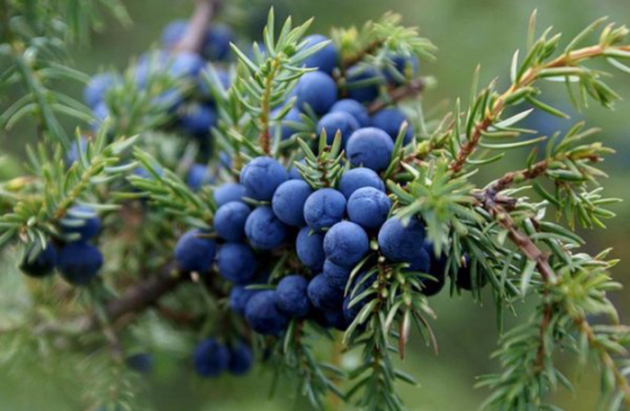

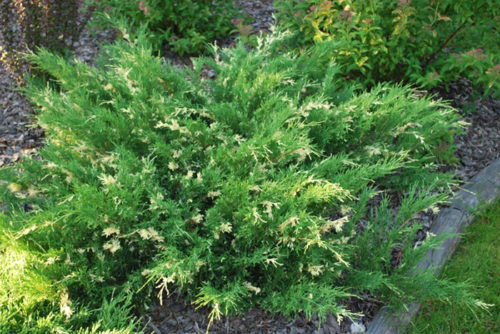
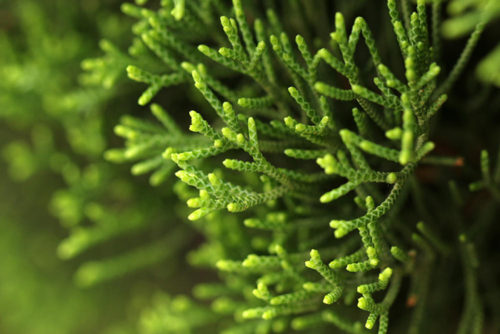
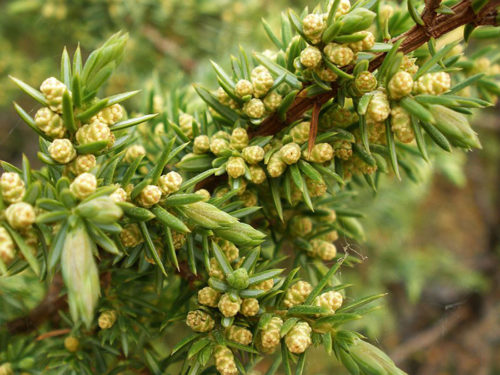
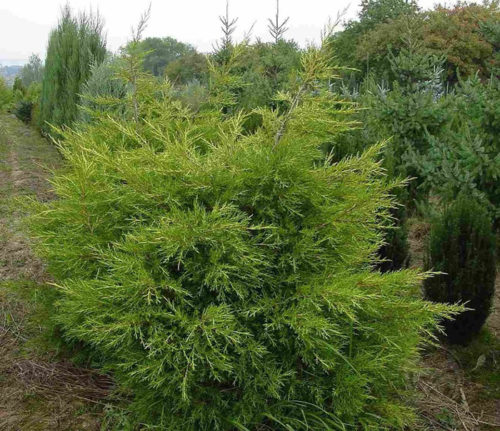
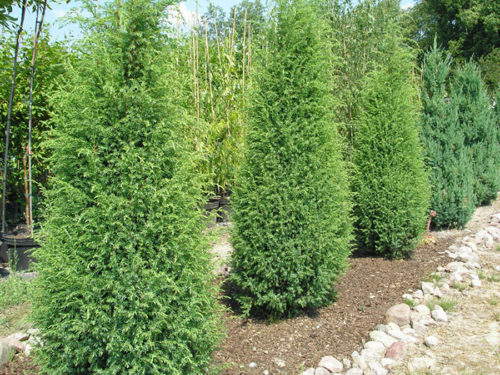
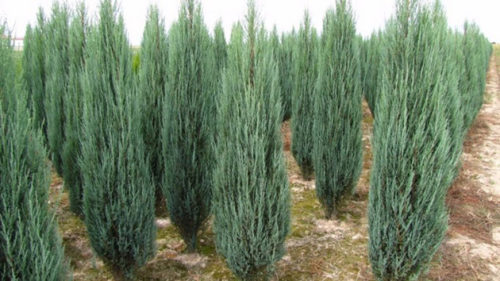
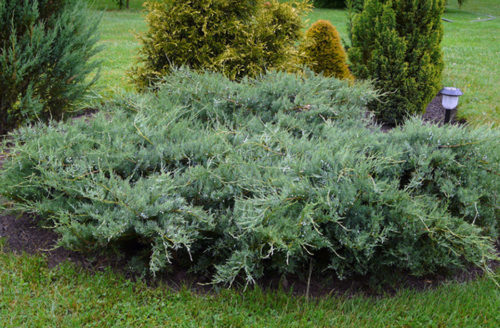
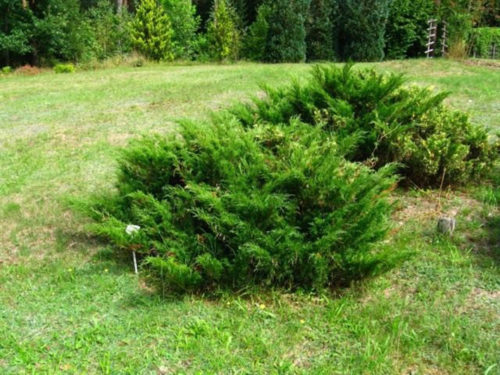
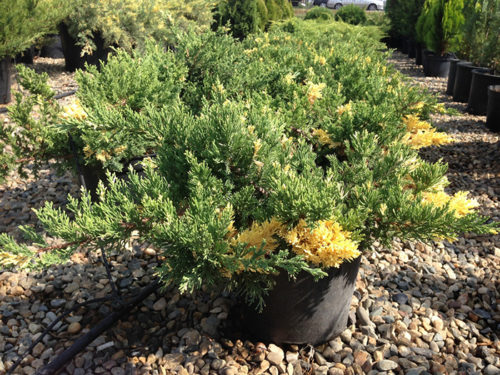
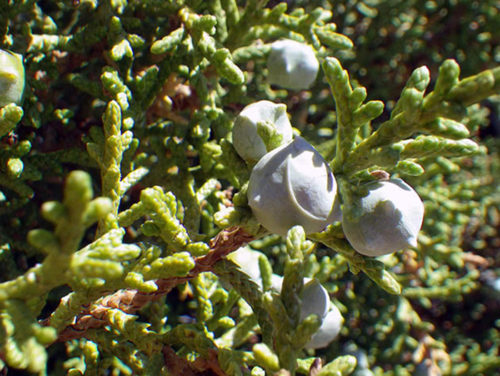
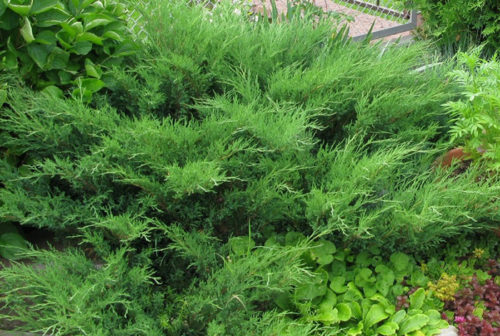
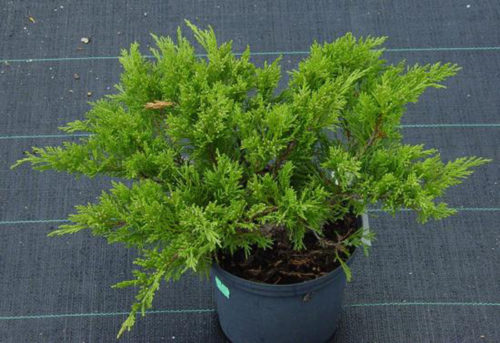
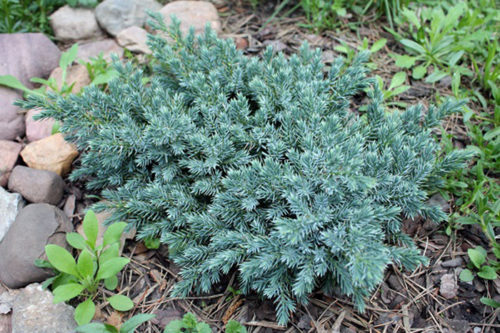
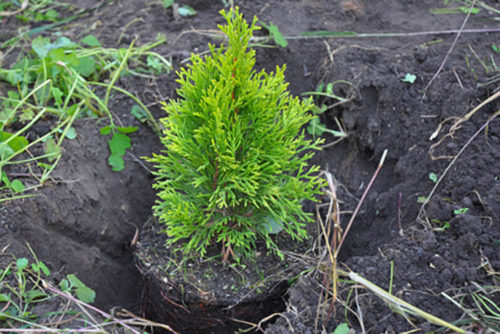
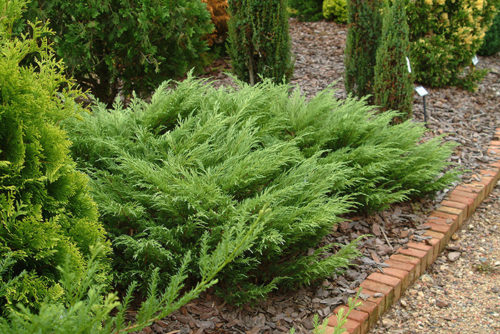
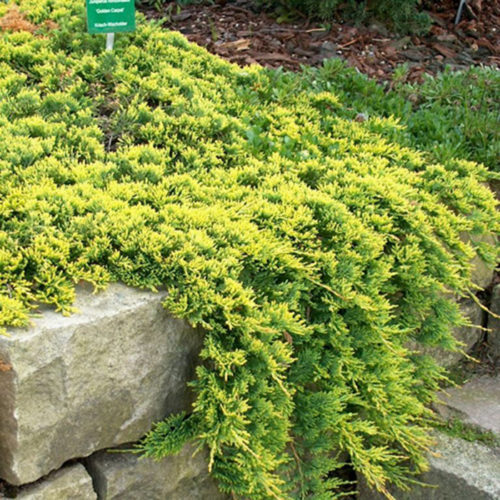
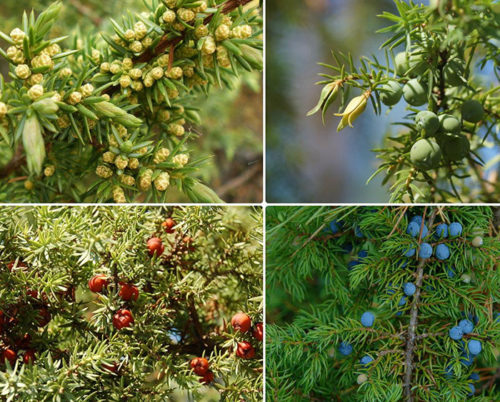
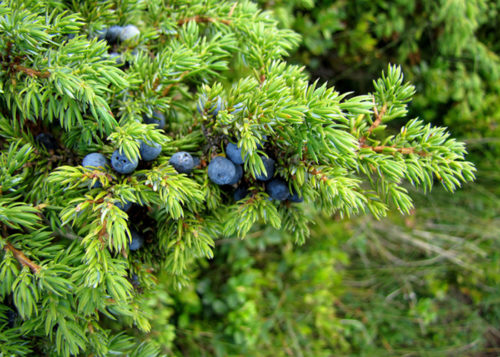
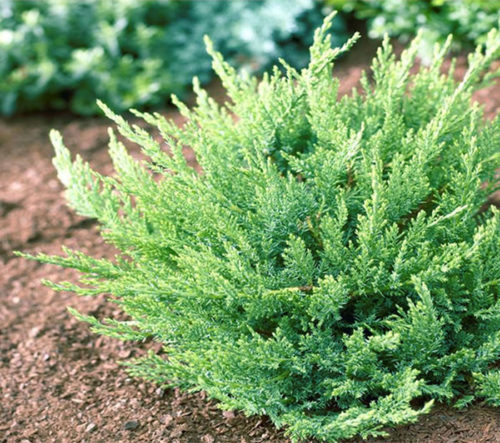












 Start a discussion ...
Start a discussion ...